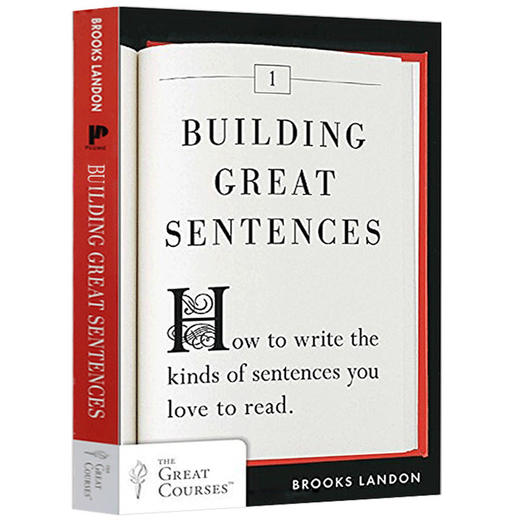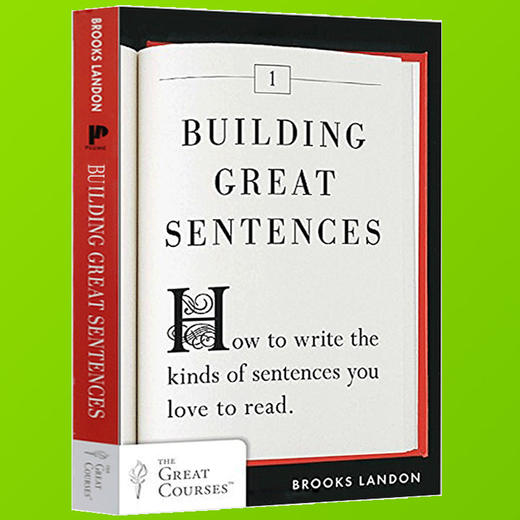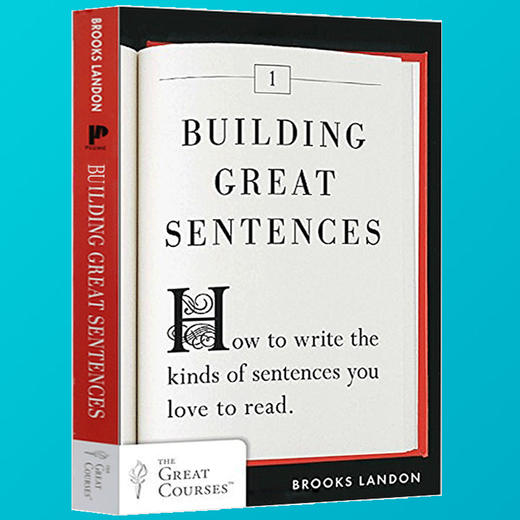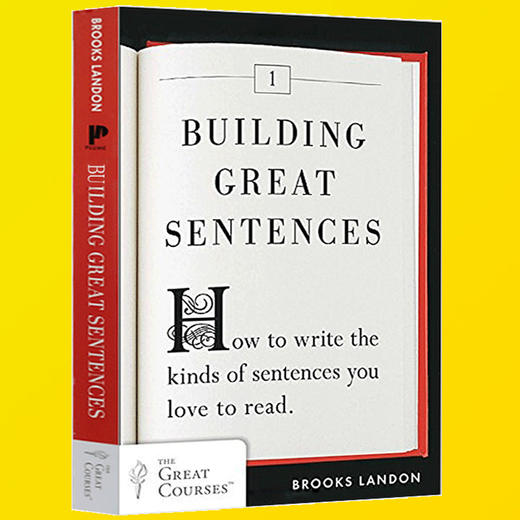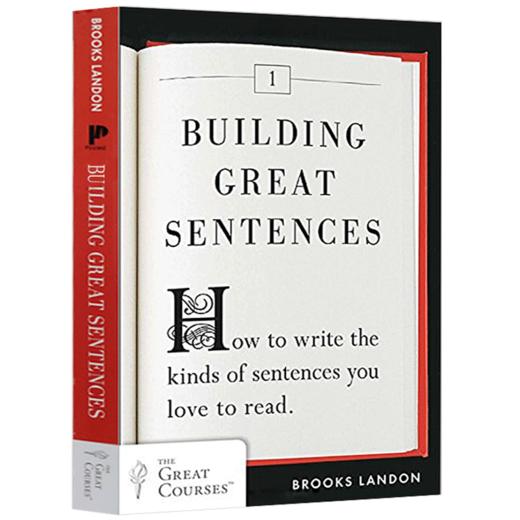正版 如何造句 英文原版 Building Great Sentences 英文版 英语写作学习指南 雅思托福写作指导书 进口书
| 运费: | ¥ 0.00-999.00 |
| 库存: | 39 件 |
商品详情

书名:Building Great Sentences: How to Write the Kinds of Sentences You Love to Read 如何造句
作者:Brooks Landon
出版社名称:Plume
出版时间:2013
语种:英文
ISBN:9780452298606
商品尺寸:13.2 x 1.8 x 20.3 cm
包装:平装
页数:288
Brooks Landon,美国爱荷华大学教授,美国著名大学教育课程“TTC课程”(TTC course)的授课教师。这本Building Great Sentences《如何造句》是Landon教授以TTC课程“Building great sentences-Exploring the Writer’s Craft”的文本为基础而著作的一本英文写作指导书。书中对句子的成分、语法、修辞、句子的形成、句型结构等方面都进行了分析,帮助读者学会如何用英语如何写出完美的句子,从而体验语言的乐趣。
本书为英文版,适合写作爱好者、国际学校学生或打算出国留学的学生使用。
推荐理由:
1.美国大学著名写作课程,具有很大的启发性;
2. 可搭配TTC课程视频一起使用,李笑来推荐;
3. 含案例分析,书中引用了弗吉尼亚·伍尔芙等名家的作品句子;
4.英文原版,印刷清晰,纸质护眼,阅读舒适。
Based on the bestselling series from The Great Courses, Building Great Sentences celebrates the sheer joy of language—and will forever change the way you read and write.
Great writing begins with the sentence. Whether it’s two words (“Jesus wept.”) or William Faulkner’s 1,287-word sentence in Absalom! Absalom!, sentences have the power to captivate, entertain, motivate, educate, and, most importantly, delight. Yet, the sentence-oriented approach to writing is too often overlooked in favor of bland economy. Building Great Sentences teaches you to write better sentences by luxuriating in the pleasures of language.
Award-winning Professor Brooks Landon draws on examples from masters of long, elegant sentences—including Don DeLillo, Virginia Woolf, Joan Didion, and Samuel Johnson—to reveal the mechanics of how language works on thoughts and emotions, providing the tools to write powerful, more effective sentences.
Review
“The most erudite, readable book anyone has ever written on the sentence.”—Adrian Blevins, associate professor of English, Colby College
“An Elements of Style for the prodigious, Building Great Sentences is a service to writers and a joy to read.”—R.M. Berry, professor, Florida State University

Based on the bestselling series from The Great Courses, Building Great Sentences celebrates the sheer joy of language—and will forever change the way you read and write.
Great writing begins with the sentence. Whether it’s two words (“Jesus wept.”) or William Faulkner’s 1,287-word sentence in Absalom! Absalom!, sentences have the power to captivate, entertain, motivate, educate, and, most importantly, delight. Yet, the sentence-oriented approach to writing is too often overlooked in favor of bland economy. Building Great Sentences teaches you to write better sentences by luxuriating in the pleasures of language.
Award-winning Professor Brooks Landon draws on examples from masters of long, elegant sentences—including Don DeLillo, Virginia Woolf, Joan Didion, and Samuel Johnson—to reveal the mechanics of how language works on thoughts and emotions, providing the tools to write powerful, more effective sentences.

Dr. Brooks Landonis Herman J. and Eileen S. Schmidt Professor of English and Collegiate Fellow at The University of Iowa and Director of the University’s General Education Literature Program. He lives in Iowa.

Introduction
We live in a world of words. Digital media inundate us with language in a twenty-four/seven barrage never possible in the world of printer’s ink. Constant Web updates, blogs, e-mails, instant messaging, tweets, Facebook comments, and a cascade of electronic texts give us expanded opportunities to share our writing with others. Even in the age of Skype and FaceTime we continue to interact with others through writing. More and more it is important that we represent ourselves to the world through writing that is effective—clear, precise, satisfyingly informative writing that reveals the individuality and sophistication of our thinking. And we cannot be effective writers without writing effective sentences.
Whatever the medium, print or digital, our basic unit of communication is the sentence. Good sentences are alive. We experience them in time, and we react to their unfolding as they twist and turn, challenging us, teasing us, surprising us, and sometimes boring or confusing us as we read them. This book will explore the ways we can make our sentences better. To accomplish that we need to understand how making our sentences longer or shorter can make them more effective, more informative, more satisfying. We need to understand how taking control of building and trimming our sentences can improve our writing.
Our goals will be to learn about how sentences work, what they do, and how we can think and talk about them in ways that will help both our own writing and our understanding of prose style. We will stretch our sense of all the things a sentence can be or do. We will explore the mysterious concept of “style” to discover what style does and does not mean. This is a book in which we will dance with language, not a book in which we will trudge toward remedial correctness.
Dancing with language can be a rowdy affair. We might wish this dance had the precision, rules, and predictability of a tango, but it probably has much more in common with freestyle dancing that is more spontaneous and more creative, open to new steps and encouraging the reinterpretation of old ones. When the writer dances with language, toes do sometimes get stepped on as rules are broken. Of course, in dancing, as in writing, we need some ideas of what the rules are before we can break them. Before this dancing metaphor runs away with me, however, I better start talking as the writing teacher I am, rather than the dancing instructor I most certainly am not.
I’m no writing guru with mystical formulas for success. I am both a longtime student of writing theory and a writing teacher with over thirty years of experience. During that time, I’ve both learned a lot about writing and passed along what I’ve learned to several generations of students. What I believe and teach about writing is more thoughtful than theoretical, based more on what I’ve found helpful to my students in the classroom than on strict adherence to any single philosophy or theory of composition. My approach to teaching writing does, however, grow out of the three broad categories of writing instruction that are focused on the sentence.
At the heart of my approach is Francis Christensen’s belief in the value of cumulative sentences built by adding modifying phrases to base clauses or “kernel” sentences. I expand Christensen’s advocacy of cumulative sentences by identifying and explaining the value of a range of syntactical and rhetorical patterns, forms, or schemes I ask my students to imitate until they learn how to adapt these patterns to their own uses. In trusting the value of imitation as a basis for rather than as the opposite of creativity, I am championing a classical approach to writing I believe remains highly effective. The third component of my approach to writing incorporates many of the assumptions of sentence-combining strategies popular in the 1970s. I’ll say more about the nature and history of those three sentence-based approaches in my final chapter, after you’ve had a chance to experience and try out some of my particular spin on their methods and assumptions. For now I want to assure you that my approach to building great sentences grows out of pedagogies of proven effectiveness and promotes ways of building better sentences that fine writers know and practice. In drawing from and finding ways to combine these three broad approaches to the sentence I also try to provide a better understanding of the ways in which our standards and “rules” for effective writing have changed over time—and continue to evolve.
No rules or formulas or mechanical protocols can prepare us for the infinite number of tasks our sentences must accomplish, but there are a number of basic strategies we can learn that help make our sentences more effective. I’m going to introduce you to a broad range of techniques, but a particular favorite of mine is the cumulative sentence, an especially useful syntax employed by professional writers and best understood in terms first laid out by composition theorist Francis Christensen back in the 1960s.
Before we can work with a specific syntax, we need to understand the basic principles that guide the creation and use of all sentences. Accordingly, this book will look closely and carefully at sentences from a number of different angles, starting with their underlying logic and moving through the reasons why we cannot separate the content of a sentence from its form, its meaning from its style. We will look at the ways sentences work, from the most basic kernel sentences that are nothing more than a subject joined with a verb, to the most elaborate and extended master sentences, some stretching to lengths of more than one hundred words.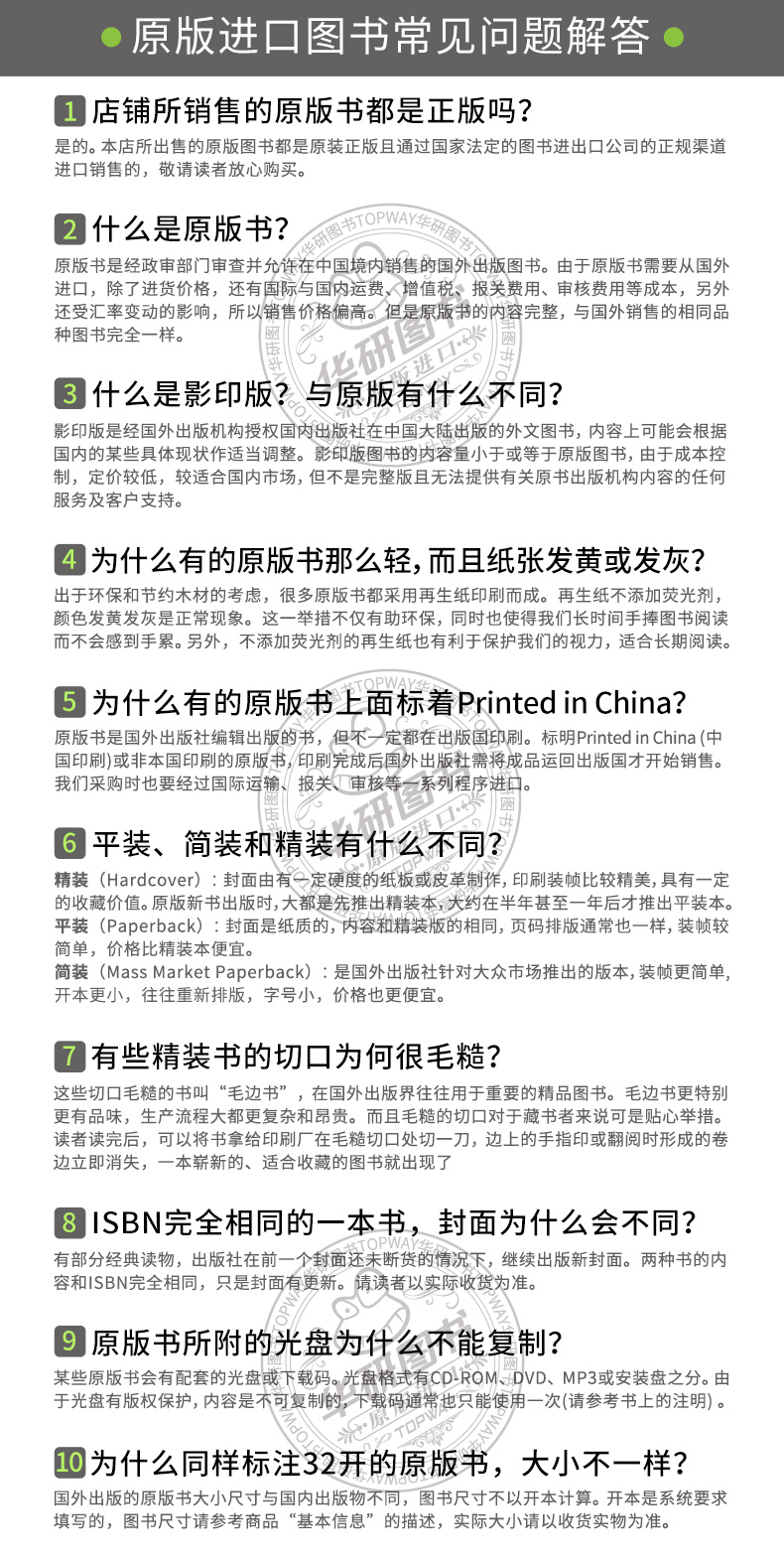
- 华研外语 (微信公众号认证)
- 本店是“华研外语”品牌商自营店,全国所有“华研外语”、“华研教育”品牌图书都是我司出版发行的,本店为华研官方源头出货,所有图书均为正规正版,拥有实惠与正版的保障!!!
- 扫描二维码,访问我们的微信店铺
- 随时随地的购物、客服咨询、查询订单和物流...
